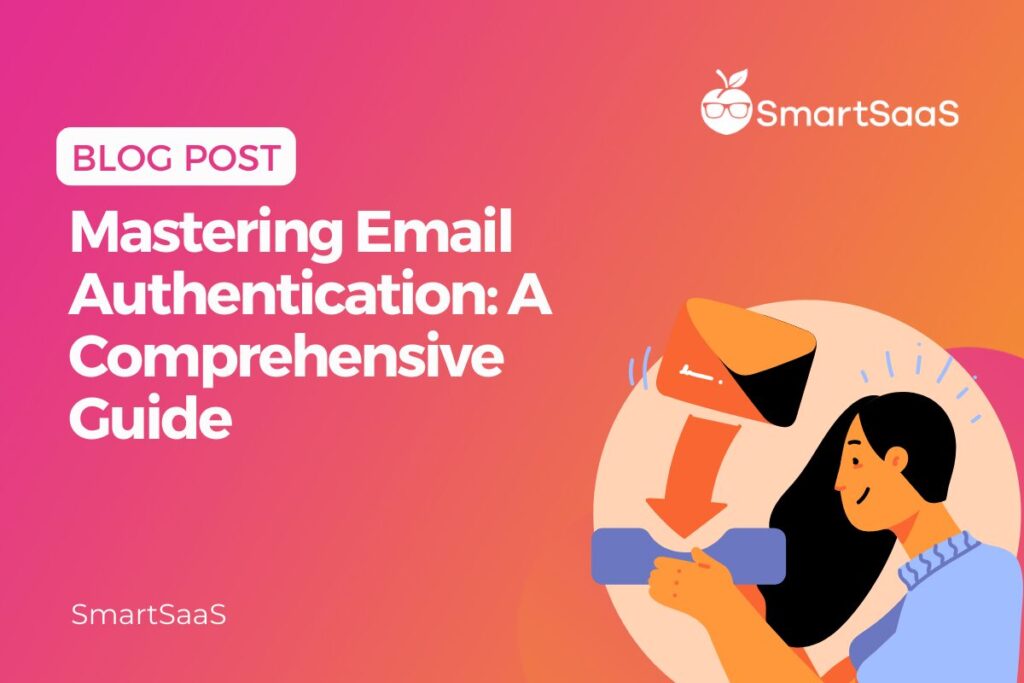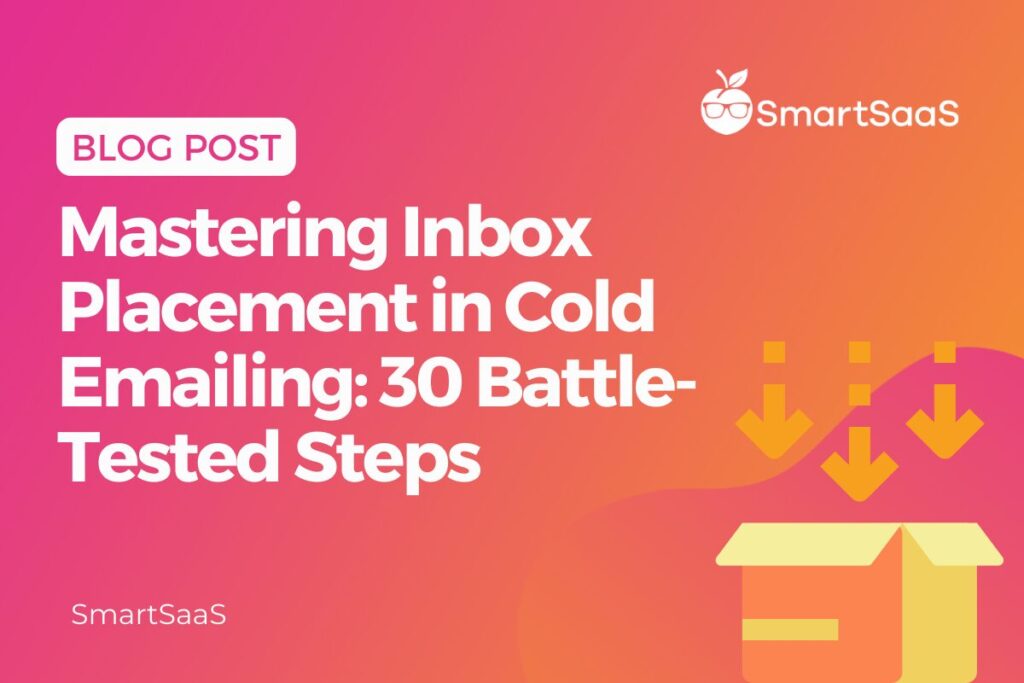Mastering Email Authentication: A Comprehensive Guide

Email authentication plays a crucial role in maintaining the integrity of email communications. It involves confirming the identity of the email sender and verifying that the email address has not been tampered with or originated from a spoofed source. This process is essential for ensuring the trustworthiness of email interactions. The protocols utilized in email authentication collectively offer a dependable method for confirming the sender’s identity, safeguarding email communication.
Understanding Email Authentication
Email authentication verifies the email sender’s identity and ensures that the email is not forged or sent from a spoofed address. You can use various protocols and technologies to verify the email message’s authenticity. These protocols include Sender Policy Framework (SPF), DomainKeys Identified Mail (DKIM), and Domain-based Message Authentication, Reporting & Conformance (DMARC).
Businesses can use several email authentication protocols to secure their email messages. Here’s a brief explanation of each:
- SPF (Sender Policy Framework): SPF is an email authentication protocol that allows domain owners to specify which mail servers are authorized to send emails from their domain. The receiving mail server checks the SPF record of the transmitting part to confirm whether the email is sent from a trusted server. If the email is sent from an unauthorized server, it will likely be marked as spam or rejected.
- DKIM (DomainKeys Identified Mail): DKIM is an email authentication protocol that uses digital signatures to verify the sender’s identity and the email’s integrity. The sender adds a digital signature to the email message header using a private key, and the receiving mail server verifies the signature using the public key published in the sender’s domain DNS record. DKIM helps prevent email spoofing and ensures that the message has not been tampered with during transit.
- DMARC (Domain-based Message Authentication, Reporting, and Conformance): DMARC is an email authentication protocol that builds on SPF and DKIM to provide a more comprehensive email authentication solution. DMARC allows domain owners to specify how receiving mail servers should handle messages that fail SPF and DKIM checks. DMARC provides reporting mechanisms to help domain owners monitor and improve email authentication practices.
Domain owners can combine these protocols to provide strong email authentication and protect their brand reputation. These protocols help ensure email messages not marked as spam and are successfully delivered to the recipient’s inbox. They also prevent unauthorized use of your domain name, which can lead to a damaged brand reputation.
The Importance of Email Authentication
Email authentication is a vital process that verifies the authenticity of the sender’s email, ensuring that the email is not fraudulent and that the recipient can trust the sender. Email authentication plays a critical role in ensuring the deliverability of emails, protecting against email spoofing and phishing attacks, and providing benefits for email marketers.
Impact of Email Authentication on Email Deliverability
Email deliverability is the ability of emails to land in recipients’ inboxes without getting flagged as spam. Email providers use authentication standards like SPF, DKIM, and DMARC to verify the sender’s authenticity. Without proper authentication, your emails are more likely to be marked as spam, significantly impacting your cold email campaign’s success.
Protection against Email Spoofing and Phishing Attacks
Email authentication also helps protect against email spoofing, where the sender forges email headers to make the email appear to be sent by a trusted source. These spoofed email addresses are often used in phishing attacks, where the sender tries to make the recipient believe into revealing sensitive information, such as login credentials or credit card numbers. By authenticating your emails, you help protect your brand’s reputation and prevent fraudsters from using your domain for malicious purposes.
Benefits for SDRs
Proper email authentication can provide several benefits for email marketers, including:
- Improved email deliverability rates
- Increased customer trust and engagement
- Better campaign performance
By establishing a consistent track record of sending authenticated emails, you can build a positive sender reputation and increase the likelihood of your emails landing in recipients’ inboxes. Additionally, authentication can improve email engagement rates by increasing the possibility that recipients will open and interact with your emails.
How to Set Up Email Authentication
Step-by-step guide for setting up SPF:
- Log in to your domain’s DNS management console.
- Create a new TXT record for your domain.
- Add the following SPF record to the TXT field: “v=spf1 include:yourdomain.com ~all” (replace “yourdomain.com” with your actual domain name).
- Save the changes and wait for the record to propagate.
Step-by-step guide for setting up DKIM:
- Generate a public/private key pair using a DKIM generator tool.
- Log in to your domain’s DNS management console.
- Create a new TXT record for your domain.
- Add the public key generated in step 1 to the TXT field with the following format: “v=DKIM1; k=rsa; p=publickey” (replace “public key” with your actual public key).
- Save the changes and wait for the record to propagate.
Step-by-step guide for setting up DMARC:
- Log in to your domain’s DNS management console.
- Create a new TXT record for your domain.
- Add the following DMARC record to the TXT field: “v=DMARC1; p=none; rua=mailto:youremail@yourdomain.com; ruf=mailto:youremail@yourdomain.com; sp=none; adkim=r; aspf=r” (replace “youremail@yourdomain.com” with your actual email address).
- Save the changes and wait for the record to propagate.
It’s important to note that the setup process may vary depending on your DNS management console and email provider. It’s recommended to check your provider’s documentation for specific instructions.
By following these steps, you can ensure that your emails are properly authenticated and have a higher chance of reaching your recipients’ inboxes.
Common Email Authentication Issues and How to Resolve Them
Even with correctly setting up email authentication, issues can still arise. This section will discuss some common email authentication problems and challenges you may encounter, and solutions you can apply.
SPF Record Errors
SPF record errors can occur when the SPF record is not set up correctly or when the email server is not authorized to send emails on behalf of the domain. To resolve this issue, follow these steps:
- Check the SPF record to ensure it is correctly set up and includes all the necessary IP addresses and servers.
- Verify that the email server can send emails as the domain by checking the SPF record.
- If there are any errors, make the needed corrections to the SPF record and update it accordingly.
DKIM Signature Errors
DKIM signature errors can occur when the DKIM signature is not set up correctly or when the DKIM key is invalid or expired. To resolve this issue, follow these steps:
- Check the DKIM signature to ensure it is correctly set up and includes all necessary keys.
- Verify that the DKIM key is valid and not expired.
- If there are any errors, make the required corrections to the DKIM signature and key and update them accordingly.
DMARC Policy Issues
DMARC policy issues can occur when the DMARC policy needs to be set up correctly or when it conflicts with the SPF or DKIM policies. To resolve this issue, follow these steps:
- Check the DMARC policy to ensure it is correctly set up and does not conflict with the SPF or DKIM policies.
- Regularly monitor DMARC reports to ensure the policy is correctly enforced and identify any issues.
- If there are any errors, make the necessary corrections to the DMARC policy and update it accordingly.
Following these steps, you can effectively resolve common email authentication issues and ensure your emails are delivered securely and reliably.
To Wrap Things Up
To sum up, the significance of email authentication in the realm of cold emailing cannot be overstated. Implementing diverse authentication techniques enables businesses to fortify their defenses against email spoofing and phishing attacks. Additionally, these methods enhance email deliverability, contributing to an increased return on investment. Although challenges like SPF record errors, DKIM signature discrepancies, and DMARC policy complications may arise, they can be effectively resolved. This ensures that your emails successfully reach the intended inboxes of your targets.
Related Content In Our Marketplace
-
Mastering Startup Revenue Growth: Sales and Marketing Bootcamp
-
High Email Deliverability Checklist
-
Email Deliverability Cheat Sheet
-
Spam Filter & Deliverability Checklist
-
Email deliverability Guide: Setting-Up SPF, DKIM & DMARC
Bonus: Email Authentication Tools
ZeroBounce – Email verification and deliverability platform –
- Email verification to reduce bounces and improve deliverability
- Spam trap detection to identify potential issues
- Email scoring to assess the quality of your email list
- Email data append to enrich contact information
- Data protection and GDPR compliance
Kickbox – Email verification and list cleaning tool
- Email verification API for real-time validation
- Disposable email detection to filter out temporary addresses
- Catch-all email detection to identify risky addresses
- Domain and mailbox-level validation
- Detailed reporting and analytics for data-driven decision-making
NeverBounce – Email verification and list cleaning solution
- Bulk email list verification with fast turnaround times
- Syntax and format validation for accurate email checking
- Spam trap detection and removal
- Catch-all email detection to minimize bounce rates
- Detailed reporting and analytics for insights on email quality
Bouncer – Ensure email deliverability with accurate verification and validation.
- Email verification to remove invalid and risky addresses
- Spam trap detection to avoid blacklisting
- Disposable email detection to filter out temporary addresses
- Syntax and format checks for accurate email data
- Real-time API for seamless integration with existing systems
DeBounce – Improve email deliverability and sender reputation with powerful email verification and validation.
- Email verification to remove invalid, inactive, and risky addresses
- Syntax and format checks for accurate email data
- Spam trap detection to prevent blacklisting
- Catch-all domain detection to reduce bounces
- Disposable email detection to filter out temporary addresses
- MX record verification for checking email server validity
- API integration for seamless integration with existing systems
Mailfloss – Automate and streamline email verification for your marketing campaigns with seamless integration and powerful cleaning features.
- Bulk email list verification with support for popular email providers
- Daily automatic cleanups for connected email marketing services
- Whitelist and blacklist options for customized cleaning
- Control over deleted and unsubscribed emails to preserve valid contacts
- Extensive integrations with email marketing service providers and Zapier connectivity
Clearout – Identify and remove bad emails effortlessly with a range of verification methods and convenient integrations.
- Bulk email list verifications for up to 1 million emails at a time
- Instant email verifications for quick individual checks
- REST API for real-time verifications and seamless integration with forms
- Lead finder to extract valuable data for B2B lead generation
- Integrations with email marketing services and Zapier connectivity
MailerCheck – Validate emails effortlessly with bulk verification, API integrations, individual checks, and detailed reporting.
- Bulk email verification by uploading CSV or connecting with email provider
- API integrations with popular email platforms for easy import of subscribers
- Individual email verification for single addresses
- Detailed reporting for insights on verification results
EmailListVerify – The trusted email verification tool used by industry leaders for accurate list cleaning.
- Bulk email list verification with a deliverability rate of over 99%
- Email verification API for real-time validation on registration and opt-in forms
- Integrations with major email marketing platforms and flexible file upload options
Emailable – The powerful email verification tool trusted by leading brands for accurate list cleaning.
- Bulk email list verification with detailed results for easy analysis and management
- Real-time verification API to prevent bad emails at the point of entry on your website forms
- Automated list API for seamless integration with your app and daily clean list downloads
- Ecommerce integration to ensure valid email addresses at checkout for improved customer data quality.
Hunter – The ultimate email outreach tool with powerful email verification capabilities for improved deliverability.
- Find email addresses for business leads through domain, name, and email searches.
- Detect and remove invalid, temporary, blacklisted, and hard bounce emails.
- Bulk email list verification for efficient cleaning.
- Single email verification on Hunter’s Email Verifier page.
- API verifications for seamless integration with your email collection tools.






Responses